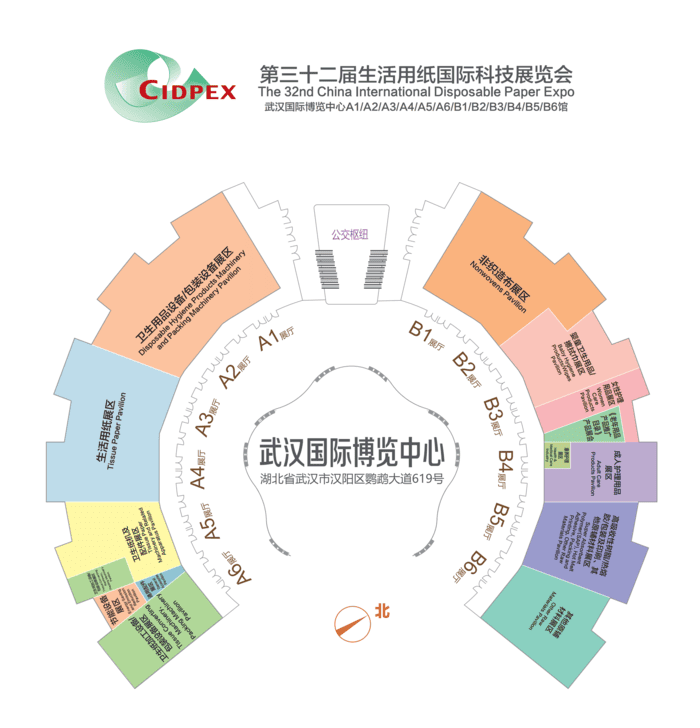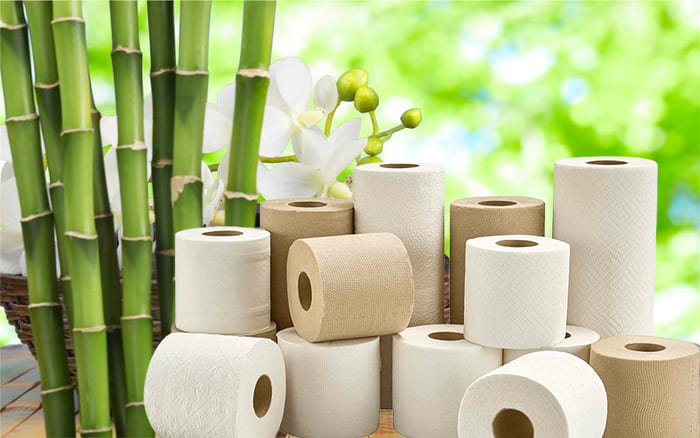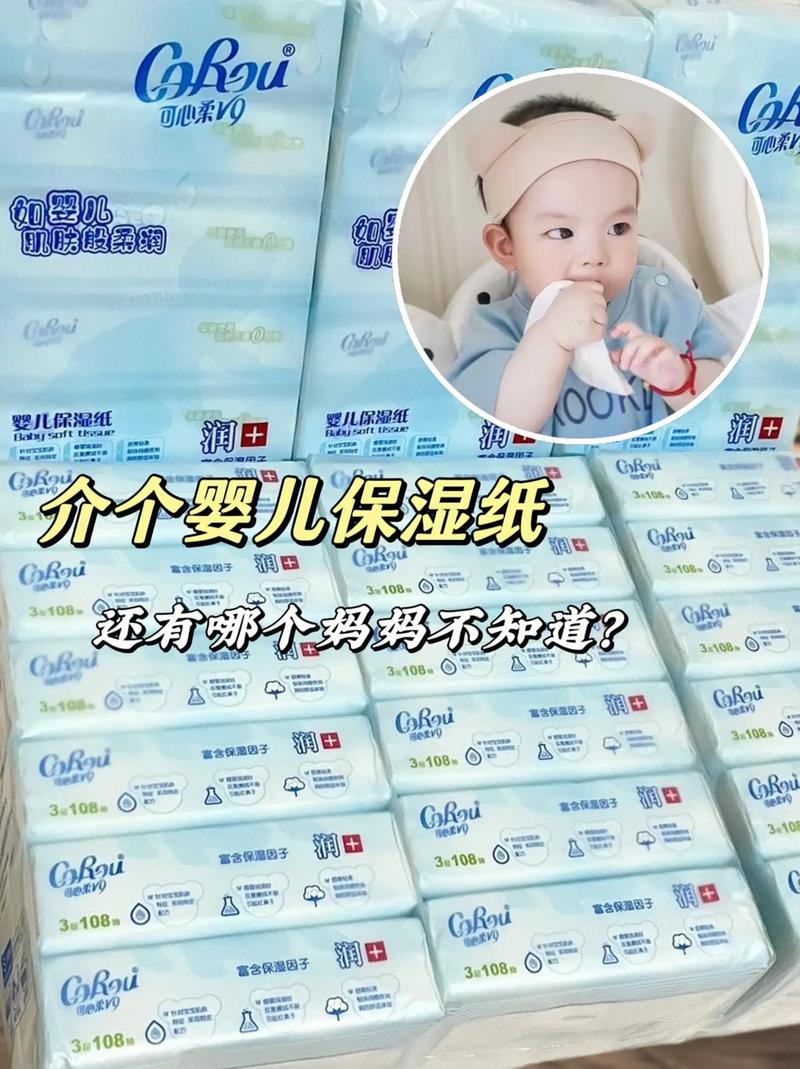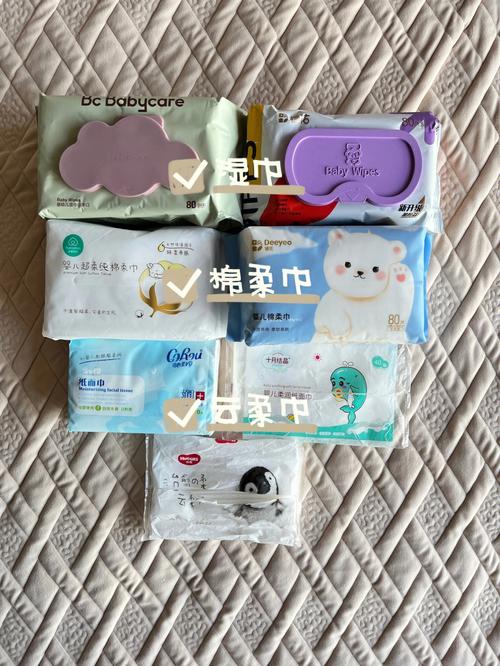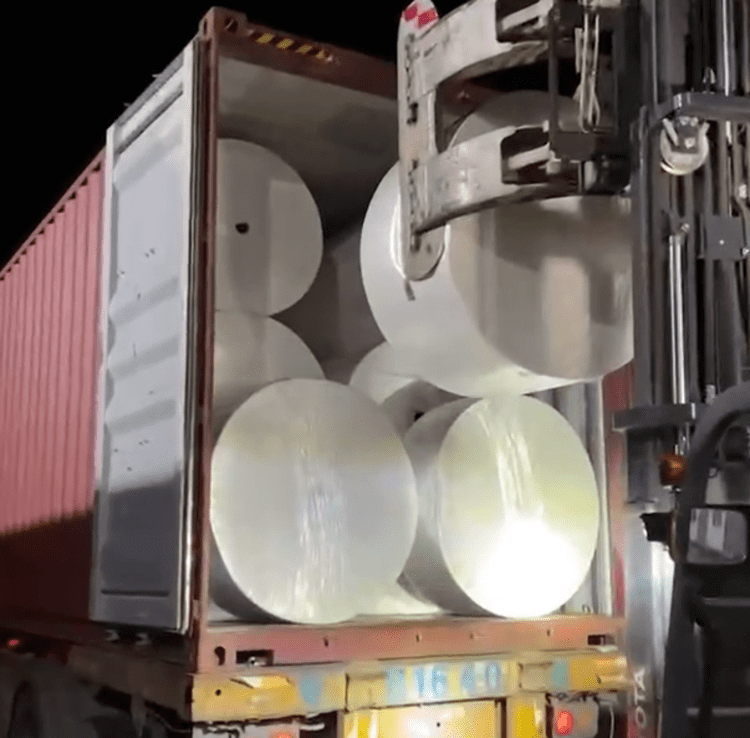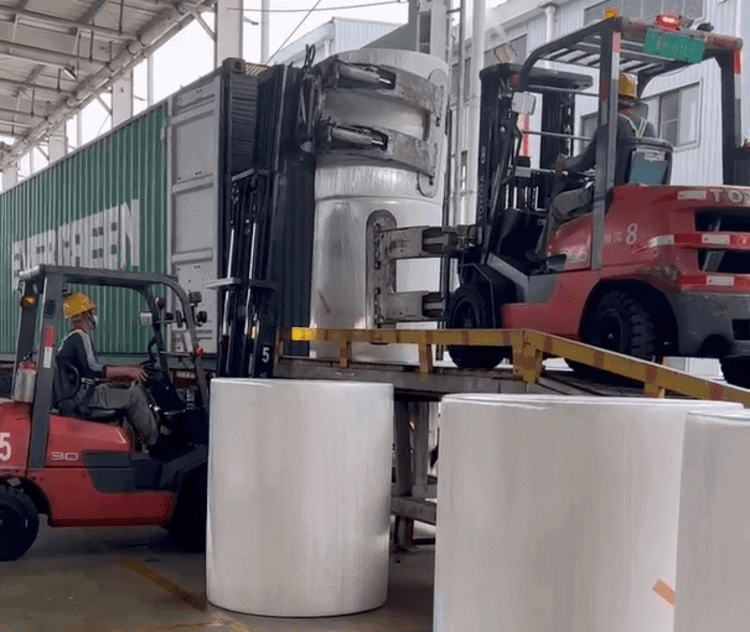How to Load More Tissue Mother Rolls in a Container?
Do you want to save money and time when transporting tissue parent rolls? Do you want to avoid damaging your products during loading and unloading? Do you want to impress your customers with your loading skills and quality?
If you answered yes to any of these questions, then this blog post is for you. In this post, I will show you a new way to load more tissue mother rolls in a container by using a combination of horizontal and vertical loading methods. I will also explain how this method works, why it is better than the traditional methods, and how you can apply it in practice.
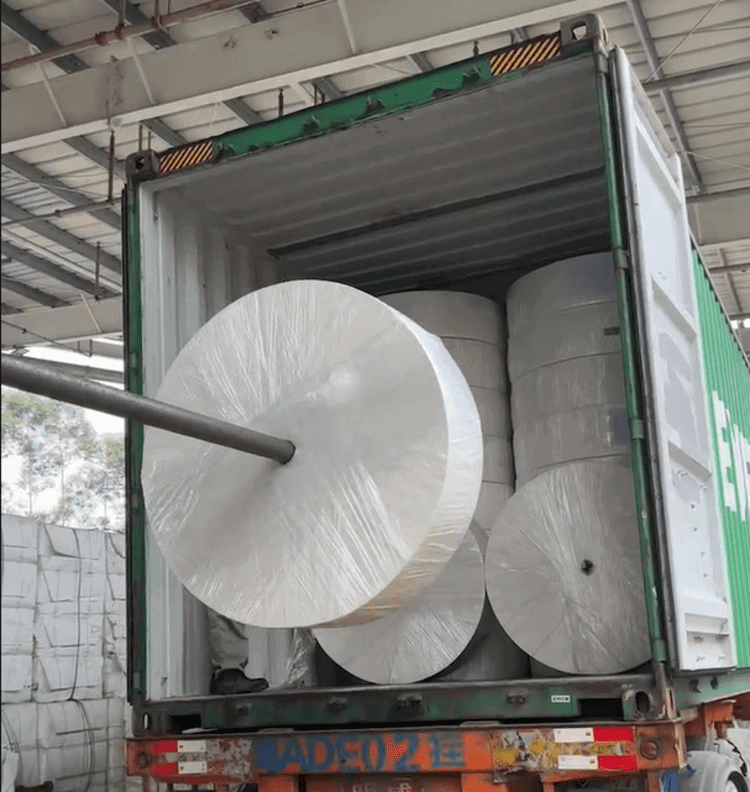
But first, let me tell you what tissue parent rolls are and why they are important.
What are Tissue Parent Rolls and Why are They Important?
Tissue mother rolls are large cylindrical paper products that are used to make different kinds of tissue products, such as Toilet paper, Facial tissue, hand towel, Kitchen towel and Paper napkins, and so on. They are usually cut into smaller rolls or sheets according to the customer’s needs.
Tissue parent rolls are important because they are widely used in daily life, and they have a high demand and value. Therefore, transporting them efficiently and safely is crucial for the paper industry and the logistics industry.
However, loading tissue parent reels in a container is not easy, because they have an irregular shape and size, and they take up a lot of space. The traditional loading methods often leave a lot of empty space in the container, which wastes money and time. They also cause damage to the tissue parent rolls, which reduces the quality and satisfaction.
That’s why I came up with a new way to load more tissue parent rolls in a container, which can solve these problems and improve the loading performance.
How to Load More Tissue Parent Rolls in a Container
The new way to load more tissue parent rolls in a container is to use a combination of horizontal and vertical loading methods. This means that you place some tissue parent rolls horizontally on the bottom of the container, and then place some tissue reels vertically on top of the horizontal ones, to fill the empty space.
This way, you can use the space in the container more efficiently, and increase the number of tissue parent rolls that you can load in a single container. You can also reduce the damage to the tissue parent rolls, by placing some of them vertically, which reduces the pressure and friction between them and the container.
To use this method, you need to do some calculations and coordination before loading the tissue paper reels in the container. You also need to use some special equipment and skills to load the tissue paper parent rolls in the container, especially for the vertical loading.
Don’t worry, I will show you how to do these things step by step, with some examples and pictures.
How to Calculate and Coordinate the Loading Configuration
Before loading the tissue parent rolls in the container, you need to calculate and coordinate the loading configuration, which means how many tissue paper mother rolls you can load in the container, and how you should arrange them in the container.
To do this, you need to know the following information:
- $D$: the diameter of the tissue parent rolls (m)
- $H$: the height of the tissue parent rolls (m)
- $V$: the volume of the tissue parent rolls (m$^3$)
- $L$: the length of the container (m)
- $W$: the width of the container (m)
- $H_C$: the height of the container (m)
- $V_C$: the volume of the container (m$^3$)
- $N$: the number of tissue parent rolls loaded in the container
- $V_T$: the total volume of tissue parent rolls loaded in the container (m$^3$
You can use some simple formulas to calculate these information, or you can use a computer program or a mobile app to do it for you. Here are some examples of how to calculate these information, using some sample data.
Example 1: Horizontal Loading Method
The horizontal loading method is to place the jumbo tissue paper rolls horizontally on the bottom of the container, and stack them up to the height of the container. This is the traditional loading method that most people use.
Let’s say the diameter of the tissue parent rolls is 1.15 m, the height of the tissue parent rolls is 1.4 m, and the dimensions of the container are 12.03 m (length) x 2.35 m (width) x 2.69 m (height).
The volume of a single tissue parent roll is calculated by:
$V = \pi \times (\frac{1.15}{2})^2 \times 1.4 = 1.46 \text{ m}^3$
The number of tissue parent rolls that can be placed horizontally in one layer is calculated by:
$N_1 = \lfloor \frac{12.03}{1.4} \rfloor \times \lfloor \frac{2.35}{1.15} \rfloor = 6 \times 2 = 12$
The number of layers that can be stacked in the container is calculated by:
$L = \lfloor \frac{2.69}{1.15} \rfloor = 2$
The total number of tissue parent rolls that can be loaded in the container is calculated by:
$N = N_1 \times L = 12 \times 2 = 24$
The total volume of tissue parent rolls that can be loaded in the container is calculated by:
$V_T = N \times V = 24 \times 1.46 = 35.04 \text{ m}^3$
The loading rate of tissue parent rolls in the container is calculated by:
$U = \frac{V_T}{V_C} \times 100\% = \frac{35.04}{76.4} \times 100\% = 45.87\%$
This means that you can load 24 tissue parent rolls in the container, and use 45.87% of the container’s volume for loading tissue parent rolls.
Example 2: Vertical Loading Method
The vertical loading method is to place the tissue jumbo reels vertically on the bottom of the container, and stack them up to the height of the container. This is another loading method that some people use.
Let’s say the diameter of the tissue parent rolls is 1.15 m, the height of the tissue parent rolls is 1.4 m, and the dimensions of the container are 12.03 m (length) x 2.35 m (width) x 2.69 m (height).
The volume of a single tissue parent roll is calculated by the same formula as the horizontal loading method. The number of tissue parent rolls that can be placed vertically in one layer is calculated by:
$N_2 = \lfloor \frac{12.03}{1.15} \rfloor \times \lfloor \frac{2.35}{1.4} \rfloor = 10 \times 1 = 10$
The number of layers that can be stacked in the container is calculated by the same formula as the horizontal loading method. The total number of tissue parent rolls that can be loaded in the container is calculated by:
$N = N_2 \times L = 10 \times 2 = 20$
The total volume of tissue parent rolls that can be loaded in the container is calculated by:
$V_T = N \times V = 20 \times 1.46 = 29.2 \text{ m}^3$
The loading rate of tissue parent rolls in the container is calculated by:
$U = \frac{V_T}{V_C} \times 100\% = \frac{29.2}{76.4} \times 100\% = 38.22\%$
This means that you can load 20 tissue parent rolls in the container, and use 38.22% of the container’s volume for loading tissue parent rolls.
Example 3: Combined Loading Method
The combined loading method is to place some tissue parent rolls horizontally on the bottom of the container, and then place some tissue parent rolls vertically on top of the horizontal ones, to fill the empty space. This is the new loading method that I propose.
Let’s say the diameter of the tissue parent rolls is 1.15 m, the height of the tissue giant rolls is 1.2 m, and the dimensions of the container are 12.03 m (length) x 2.35 m (width) x 2.69 m (height).
The volume of a single tissue parent roll is calculated by:
$V = \pi \times (\frac{1.15}{2})^2 \times 1.2 = 1.26 \text{ m}^3$
The number of tissue parent rolls that can be placed horizontally in one layer is calculated by:
$N_1 = \lfloor \frac{12.03}{1.2} \rfloor \times \lfloor \frac{2.35}{1.15} \rfloor = 10 \times 2 = 20$
The number of tissue parent rolls that can be placed vertically in one layer is calculated by:
$N_3 = \lfloor \frac{12.03 – 10 \times 1.2}{1.15} \rfloor \times \lfloor \frac{2.35}{1.2} \rfloor = 2 \times 1 = 2$
The number of layers that can be stacked in the container is calculated by:
$L = \lfloor \frac{2.69}{1.15} \rfloor = 2$
$N = N_1 \times L + N_3 \times L = 20 \times 2 + 2 \times 2 = 44$
$V_T = N \times V = 44 \times 1.26 = 55.44 \text{ m}^3$
$U = \frac{V_T}{V_C} \times 100\% = \frac{55.44}{76.4} \times 100\% = 72.54\%$
This means that you can load 44 tissue parent rolls in the container, and use 72.54% of the container’s volume for loading tissue parent rolls.
As you can see, the combined loading method can improve the loading rate significantly, if the height of the tissue parent rolls is not a divisor of the length of the container. For example, if the height of the tissue base rolls is 1.4 m, then the combined loading method does not improve the loading rate, because there is no space left for the vertical loading. But if the height of the tissue parent rolls is 1.2 m, then the combined loading method can increase the loading rate by 33.24%, compared with the horizontal loading method.
How to Load the Tissue Parent Rolls in the Container
After calculating and coordinating the loading configuration, you need to load the tissue parent rolls in the container according to the selected loading method. You need to use some special equipment and skills to load the tissue parent rolls in the container, especially for the vertical loading.
To do this, you need to follow these steps:
- Step 1: Use a forklift or a crane to lift and move the tissue parent rolls from the storage area to the loading area. Make sure that the tissue parent rolls are in good condition and have the correct labels and numbers.
- Step 2: Use a forklift or a crane to load the tissue parent rolls in the container according to the selected loading method. For the horizontal loading, place the tissue parent rolls horizontally on the bottom of the container, and stack them up to the height of the container. For the vertical loading, place the tissue parent rolls vertically on the bottom of the container, and stack them up to the height of the container. For the combined loading, place some Rollo madre de papel tissue horizontally on the bottom of the container, and then place some tissue parent rolls vertically on top of the horizontal ones, to fill the empty space.
- Step 3: Use sensors or cameras to monitor the position and orientation of the tissue parent rolls in the container. Adjust the tissue parent rolls if necessary, to fit them in the container as much as possible. Follow the safety rules and guidelines to ensure the stability and quality of the loading.
- Step 4: Use a measuring tape and a camera to measure and record the actual volume and loading rate of the tissue parent rolls in the container. Take pictures of the loading configuration and the empty space in the container. Compare the results with the mathematical models and the expected values.
- Step 5: Use a forklift or a crane to unload the tissue parent rolls from the container and check their condition. Take pictures of the tissue parent rolls and look for any signs of damage, such as deformation, tearing, or staining. Compare the results with the original condition and the expected quality.
Here are some pictures of how to load the tissue parent rolls in the container, using the combined loading method as an example.
As you can see, the combined loading method can load more tissue parent rolls in the container, and reduce the empty space in the container. It can also reduce the damage to the tissue parent rolls, by placing some of them vertically, which reduces the pressure and friction between them and the container.
How to Apply the New Loading Method in Practice
Now that you know how to load more tissue parent rolls in a container, you may wonder how to apply the new loading method in practice. You may also have some questions or concerns about the new loading method, such as:
- How much time and money can I save by using the new loading method?
- How can I communicate with my customers and my paper mills to coordinate the height of the tissue parent rolls?
- How can I train my staff and my partners to use the new loading method?
- What are the risks and challenges of using the new loading method?
Don’t worry, I have some answers and suggestions for you.
How much time and money can I save by using the new loading method?
By using the new loading method, you can save time and money in several ways. First, you can reduce the number of containers that you need to transport the same amount of tissue parent rolls, which can lower the transportation cost per unit and increase the transportation efficiency. Second, you can reduce the damage to the tissue parent rolls, which can improve the loading quality and customer satisfaction, and avoid the loss and compensation caused by the damage. Third, you can reduce the empty space in the container, which can improve the loading performance and satisfaction, and avoid the waste and inefficiency caused by the empty space.
To estimate how much time and money you can save by using the new loading method, you can use some simple calculations, or you can use a computer program or a mobile app to do it for you. Here are some examples of how to estimate the time and money savings, using some sample data.
Example 1: Horizontal Loading Method vs. Combined Loading Method
Let’s say you need to transport 1000 tissue parent rolls with a diameter of 1.15 m and a height of 1.2 m, and you have two options: using the horizontal loading method or using the combined loading method. Let’s also say that the dimensions of the container are 12.03 m (length) x 2.35 m (width) x 2.69 m (height), and the transportation cost per container is 1000 USD.
If you use the horizontal loading method, you can load 24 tissue parent rolls in one container, and use 45.87% of the container’s volume for loading tissue parent rolls. Therefore, you need 42 containers to transport 1000 tissue parent rolls, and the transportation cost is 42000 USD. The loading time is 10 minutes per container, and the loading damage rate is 10%.
If you use the combined loading method, you can load 44 tissue parent rolls in one container, and use 72.54% of the container’s volume for loading tissue parent rolls. Therefore, you need 23 containers to transport 1000 tissue parent rolls, and the transportation cost is 23000 USD. The loading time is 15 minutes per container, and the loading damage rate is 5%.
By using the combined loading method, you can save 19 containers, 19000 USD, and 95 minutes for transporting 1000 tissue parent rolls. You can also reduce the loading damage by 50 tissue parent rolls.
Example 2: Vertical Loading Method vs. Combined Loading Method
Let’s say you need to transport 1000 tissue parent rolls with a diameter of 1.15 m and a height of 1.6 m, and you have two options: using the vertical loading method or using the combined loading method. Let’s also say that the dimensions of the container are 12.03 m (length) x 2.35 m (width) x 2.69 m (height), and the transportation cost per container is 1000 USD.
If you use the vertical loading method, you can load 20 tissue parent rolls in one container, and use 38.22% of the container’s volume for loading tissue parent rolls. Therefore, you need 50 containers to transport 1000 tissue parent rolls, and the transportation cost is 50000 USD. The loading time is 15 minutes per container, and the loading damage rate is 5%.
If you use the combined loading method, you can load 20 tissue parent rolls in one container, and use 48.36% of the container’s volume for loading tissue parent rolls. Therefore, you need 50 containers to transport 1000 tissue parent rolls, and the transportation cost is 50000 USD. The loading time is 20 minutes per container, and the loading damage rate is 2.5%.
By using the combined loading method, you can save 0 containers, 0 USD, and 0 minutes for transporting 1000 tissue parent rolls. However, you can reduce the loading damage by 25 tissue parent rolls.
As you can see, the time and money savings depend on the height of the tissue parent rolls and the loading method. In general, the combined loading method can save more time and money than the horizontal or vertical loading method alone, if the height of the tissue parent rolls is not a divisor of the length of the container.
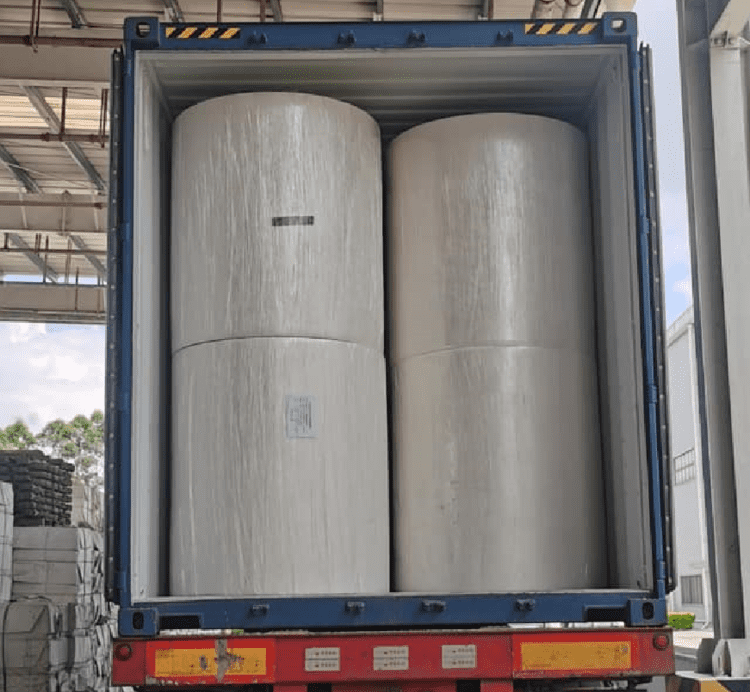
How to communicate with my customers and my paper mills to coordinate the height of the tissue parent rolls?
To use the new loading method effectively, you need to communicate with your customers and your paper mills to coordinate the height of the tissue parent rolls, and try to choose the height that can achieve the highest loading rate for the new loading method.
To do this, you need to follow these steps:
- Step 1: Explain the benefits and challenges of the new loading method to your customers and your paper mills, and show them some examples and pictures of how it works. Ask them if they are interested and willing to try the new loading method.
- Step 2: If they agree, ask them what are their requirements and preferences for the height of the tissue parent rolls, and what are the possible ranges and variations that they can accept. Explain to them how the height of the tissue parent rolls affects the loading rate and the loading method, and show them some calculations and comparisons.
- Step 3: If they are flexible, suggest them the optimal height of the tissue parent rolls that can achieve the highest loading rate for the new loading method, and explain to them the benefits and challenges of using this height. Ask them if they are willing and able to use this height for their orders and deliveries.
- Step 4: If they agree, confirm the height of the tissue parent rolls with them, and make sure that they understand and follow the new loading method. Provide them with some instructions and guidelines on how to use the new loading method, and offer them some support and feedback if needed.
By communicating with your customers and your paper mills, you can coordinate the height of the tissue parent rolls, and optimize the loading performance and satisfaction for the new loading method.
How to train my staff and my partners to use the new loading method?
To use the new loading method effectively, you also need to train your staff and your partners to use the new loading method, and make sure that they have the necessary equipment and skills to load the tissue parent rolls in the container.
To do this, you need to follow these steps:
- Step 1: Explain the benefits and challenges of the new loading method to your staff and your partners, and show them some examples and pictures of how it works. Ask them if they are interested and willing to learn the new loading method.
- Step 2: If they agree, provide them with some training materials and sessions on how to use the new loading method, such as videos, manuals, quizzes, or workshops. Teach them how to calculate and coordinate the loading configuration, how to load the tissue parent rolls in the container, and how to measure and record the loading results.
- Step 3: If they are ready, test their knowledge and skills on the new loading method, such as by giving them some exercises, scenarios, or simulations. Evaluate their performance and provide them with some feedback and suggestions for improvement.
- Step 4: If they pass, certify them as qualified users of the new loading method, and reward them with some incentives, such as bonuses, certificates, or recognition. Monitor their progress and provide them with some support and feedback if needed.
By training your staff and your partners, you can ensure that they can use the new loading method correctly and efficiently, and improve the loading quality and satisfaction.
What are the risks and challenges of using the new loading method?
The new loading method is not without risks and challenges, and you need to be aware of them and prepare for them. Some of the possible risks and challenges are:
- The new loading method may not be compatible with some types of containers or tissue parent rolls, such as open-top containers, flat-rack containers, refrigerated containers, or irregular-shaped tissue parent rolls. You need to check the specifications and compatibility of the containers and the tissue parent rolls before using the new loading method, and use the appropriate loading method for each case.
- The new loading method may require more time and effort to calculate and coordinate the loading configuration, and to load the tissue parent rolls in the container, especially for the vertical loading. You need to balance the trade-off between the loading rate and the loading time, and use some tools and techniques to simplify and speed up the loading process, such as computer programs, mobile apps, special forklifts, or cranes.
- The new loading method may encounter some resistance or misunderstanding from some customers, paper mills, staff, or partners, who may be used to or prefer the traditional loading methods. You need to communicate and educate them about the benefits and challenges of the new loading method, and provide them with some incentives and support to adopt the new loading method.
By anticipating and addressing these risks and challenges, you can minimize the negative impacts and maximize the positive outcomes of using the new loading method.
Conclusion and Next Steps
In this blog post, I showed you a new way to load more tissue parent rolls in a container by using a combination of horizontal and vertical loading methods. I explained how this method works, why it is better than the traditional methods, and how you can apply it in practice.
I hope that this blog post has given you some insights and guidance on how to improve the container utilization of de bobinas jumbo and other cylindrical products, and contribute to the transportation and logistics industry. I also hope that this blog post has inspired you to try the new loading method and see the results for yourself.
If you are interested and willing to try the new loading method, here are some next steps that you can take:
- Contact me and let me know your feedback and questions about the new loading method. I would love to hear from you and help you with any issues or challenges that you may have.
- Share this blog post with your customers, paper mills, staff, and partners, and invite them to join you in using the new loading method. I would appreciate it if you could spread the word and promote the new loading method to more people and organizations.
- Subscribe to my blog and follow me on social media, and stay tuned for more updates and tips on the new loading method. I will keep you posted on the latest developments and best practices on the new loading method.
Thank you for reading this blog post, and I hope to hear from you soon. Happy loading! 😊

